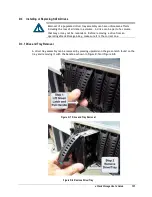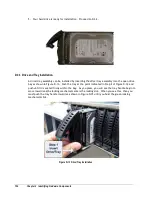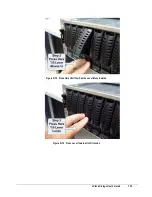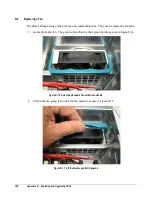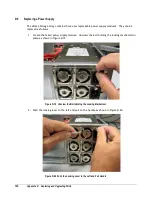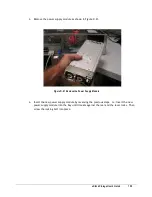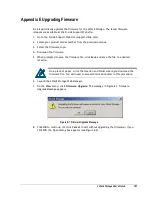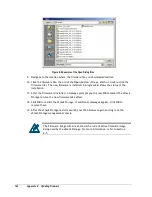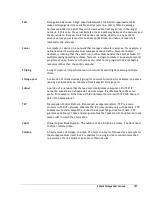
xStack Storage User’s Guide
165
Appendix G Acronyms and Abbreviations
Administrator
The person responsible for managing storage operations. The administrator is the
user who will use the storage management console provided with the xStack Storage.
CHAP
Challenge Handshake Authentication Protocol. CHAP is a protocol for authenticating
the peer of a connection and is based upon the peers sharing a secret (a security key
similar to a password).
CSMA/CD
Carrier Sense Multiple Access/Collision Detection. The LAN access method used in
Ethernet. When a device wants to gain access to the network, it checks whether the
network is quiet (senses the carrier). If it is not, it waits a random amount of time
before retrying. If the network is quiet and two devices access the line at exactly
the same time, their signals collide. When the collision is detected, they both back
off and each waits a random amount of time before retrying.
Drive
A physical storage drive (usually, but not necessarily, a disk drive) managed by the
xStack Storage system.
802.3
An IEEE standard for a CSMA/CD local-area network access method, which is used in
Ethernet, the most common LAN technology.
Extent
A contiguous set of LBs on a drive. An extent is also called a physical extent.
IETF
Internet Engineering Task Force. The main standards organization for the Internet.
The IETF is a large open international community of network designers, operators,
vendors, and researchers concerned with the evolution of the Internet architecture
and the smooth operation of the Internet. It is open to any interested individual.
Initiator node
An iSCSI node that performs as an iSCSI Initiator in accessing data stored on the
xStack Storage system.
IP
Internet Protocol. IP specifies the format of packets, or “datagrams,” and the
addressing scheme. Most networks combine IP with a higher-level protocol called
Transmission Control Protocol (TCP), which establishes a virtual connection between
a destination and a source. IP by itself is something like the postal system. It allows
you to address a package and drop it in the system, but there's no direct link
between you and the recipient. TCP/IP, on the other hand, establishes a connection
between two hosts so that they can send messages back and forth for a period of
time. The current version of IP is IPv4.
iSCSI
Internet Small Computer System Interface. An IP-based standard for linking data
storage devices over a network and transferring data by carrying SCSI commands over
IP networks. iSCSI supports a Gigabit Ethernet interface at the physical layer that
allows systems supporting iSCSI interfaces to connect directly to standard Gigabit
Ethernet switches and/or IP routers. iSCSI was developed by the IETF and became an
official standard in February 2003.
Summary of Contents for DSN-3400-10 - xStack Storage Area Network Array Hard...
Page 10: ...x Contents...
Page 20: ...20 Chapter 2 Identifying Hardware Components Figure 2 6 Press Lever Inwards Until it Locks...
Page 36: ......
Page 44: ...44 Chapter 4 Starting the xStack Storage Array for the First Time...
Page 103: ...xStack Storage User s Guide 103...
Page 117: ...xStack Storage User s Guide 117 Figure 6 12 Viewing SMART Attributes...
Page 160: ...160 Appendix D Replacing and Upgrading FRUs...
Page 164: ...164 Appendix F Hardware Enclosures...

